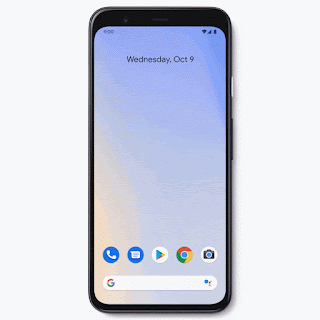New music controls, emoji and more features dropping for Pixel
A few months ago, Pixel owners got a few new, helpful features in our first feature drop. Beginning today, even more updates and new experiences will begin rolling out to Pixel users.
Help when you need it
You can already use Motion Sense to skip forward or go back to a previous song. Now, if you have a Pixel 4, you can also pause and resume music with a tapping gesture above the phone. So you can easily pause music when you're having a conversation, without even picking up your phone.
We’re also rolling out some helpful features to more Pixel devices. Now Live Caption, the technology that automatically captions media playing on your phone, will begin rolling out to Pixel 2 owners.
More fun with photos and video
New AR effects you can use live on your Duo video call with friends make chatting more visually stimulating. These effects change based on your facial expressions, and move with you around the screen. Duo calls now come with a whole new layer of fun.
Selfies on Pixel 4 are getting better, too. Your front-facing camera can now create images with depth, which improves Portrait Blur and colour pop, and lets you create 3D photos for Facebook.
Emoji on Pixel will now be a more customizable and inclusive thanks to the emoji 12.1 update, with 169 new emoji to represent a wider variation of gender and skin tones, as well as more couple combinations to better reflect the world around us.
A more powerful power button
Pixel is making it faster to pick the right card when using Google Pay. Just press and hold the power button to swipe through your debit and credit cards, event tickets, boarding passes or access anything else in Google Pay. This feature will be available to users in the US, UK, Canada, Australia, France, Germany, Spain, Italy, Ireland, Taiwan and Singapore. If you have Pixel 4, you can also quickly access emergency contacts and medical information.
Getting on a flight is also getting easier. Simply take a screenshot of a boarding pass barcode and tap on the notification to add it to Google Pay. You will receive real-time flight updates, and on the day of your flight, you can just press the power button to pull up your boarding pass. This feature will be rolling out gradually in all countries with Google Pay during March on Pixel 3, 3a and 4.
Customize your Pixel’s look and feel
A number of system-level advancements will give Pixel users more control over the look and feel of their devices.
You may know that Dark theme looks great and helps save battery power. Starting today, Dark theme gets even more helpful and flexible in switching from light to dark background, with the ability to schedule Dark theme based on local sunrise and sunset times.
Have you forgotten to silence your phone when you get to work? Pixel gives you the ability to automatically enable certain rules based on WiFi network or physical location. You can now set up a rule to automatically silence your ringtone when you connect to your office WiFi, or go on Do Not Disturb when you walk in the front door of your house to focus on the people and things that matter most.
Pixel 4 users are also getting some unique updates to the way they engage with the content on their phone. Improved long press options in Pixel’s launcher will get more and faster help from your apps. There’s also an update to Adaptive brightness, which now temporarily increases screen brightness to make reading content easier when in extremely bright ambient lighting, like direct sunlight. Check out more options for customizing your screen options.
Here’s to better selfies, more emoji and a quick pause when you need it! Check out our support page for more information on the new features, and look out for more helpful features dropping for Pixel users soon.
Source: Official Google Canada Blog
New music controls, emoji and more features dropping for Pixel
A few months ago, Pixel owners got a few new, helpful features in our first feature drop. Beginning today, even more updates and new experiences will begin rolling out to Pixel users.
Help when you need it
You can already use Motion Sense to skip forward or go back to a previous song. Now, if you have a Pixel 4, you can also pause and resume music with a tapping gesture above the phone. So you can easily pause music when you're having a conversation, without even picking up your phone.
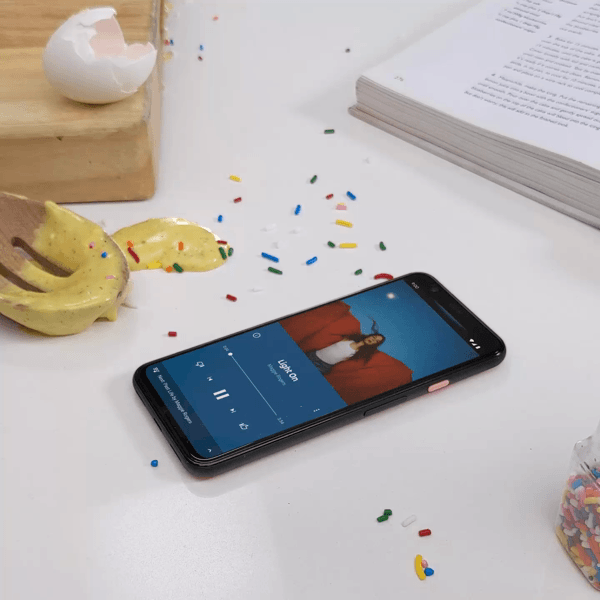
When you need help the most, your Pixel will be there too. Last October we launched the Personal Safety app on Pixel 4 for US users, which uses the phones’ sensors to quickly detect if you’ve been in a severe car crash1, and checks with you to see if you need emergency services. For those who need 911, you can request help via a voice command or with a single tap. Now, the feature is rolling out to Pixel users in Australia (000) and the UK (999). If you’re unresponsive, your Pixel will share relevant details, like location info, with emergency responders.
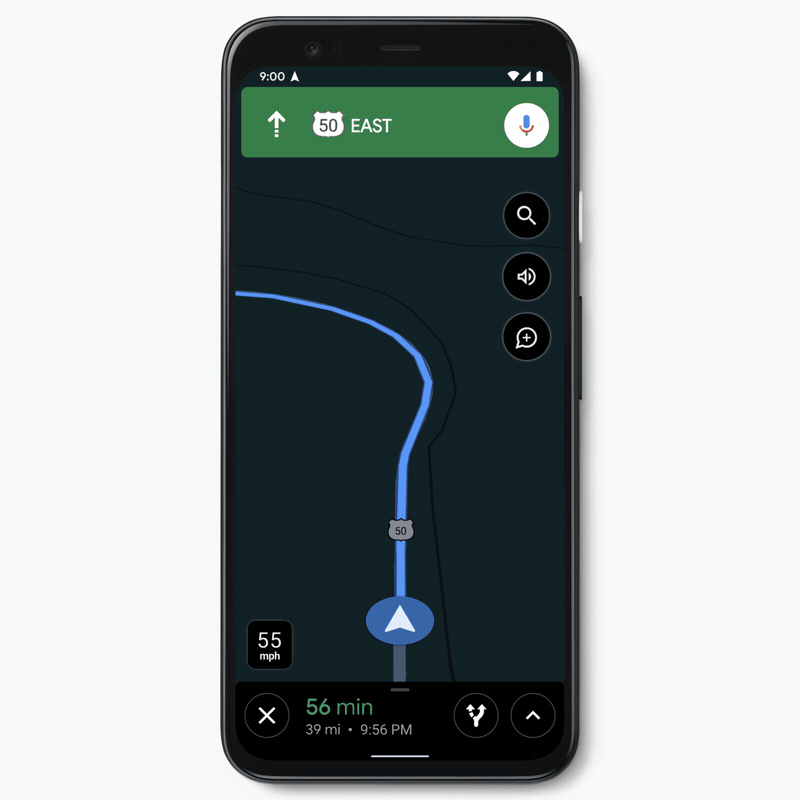
We’re also rolling out some helpful features to more Pixel devices. Now Live Caption, the technology that automatically captions media playing on your phone, will begin rolling out to Pixel 2 owners.
More fun with photos and video
New AR effects you can use live on your Duo video call with friends make chatting more visually stimulating. These effects change based on your facial expressions, and move with you around the screen. Duo calls now come with a whole new layer of fun.
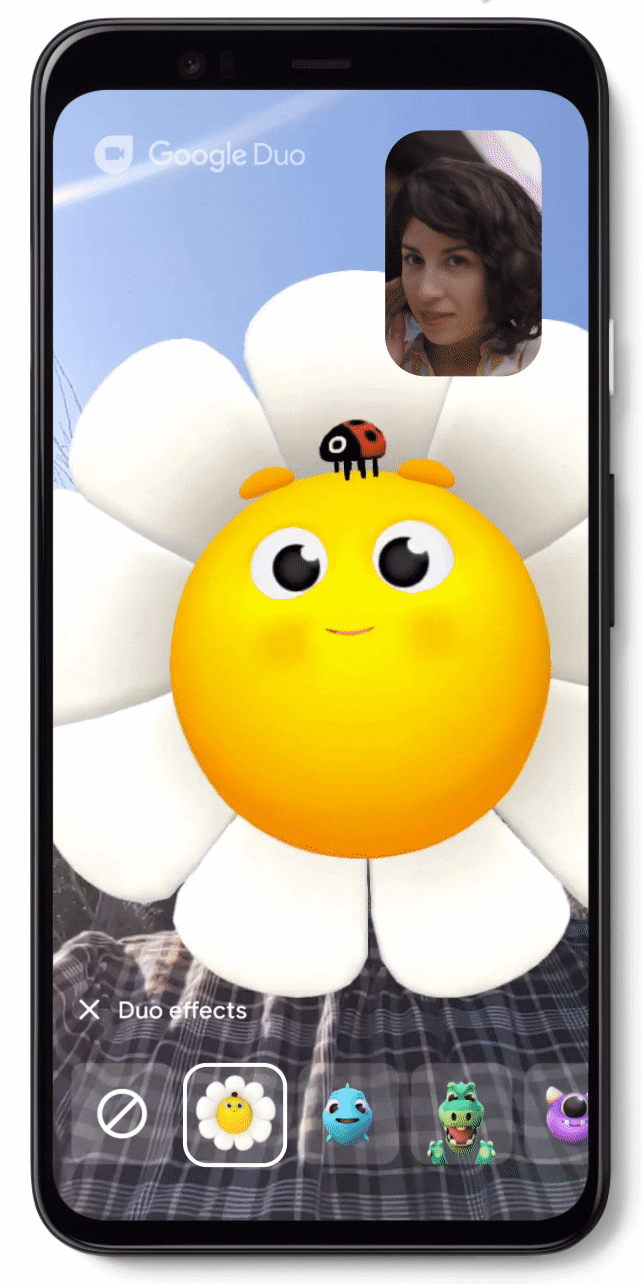
Selfies on Pixel 4 are getting better, too. Your front-facing camera can now create images with depth, which improves Portrait Blur and color pop, and lets you create 3D photos for Facebook.
Emoji on Pixel will now be a more customizable and inclusive thanks to the emoji 12.1 update, with 169 new emoji to represent a wider variation of gender and skin tones, as well as more couple combinations to better reflect the world around us.

A more powerful power button
Pixel is making it faster to pick the right card when using Google Pay. Just press and hold the power button to swipe through your debit and credit cards, event tickets, boarding passes or access anything else in Google Pay. This feature will be available to users in the US, UK, Canada, Australia, France, Germany, Spain, Italy, Ireland, Taiwan and Singapore. If you have Pixel 4, you can also quickly access emergency contacts and medical information.
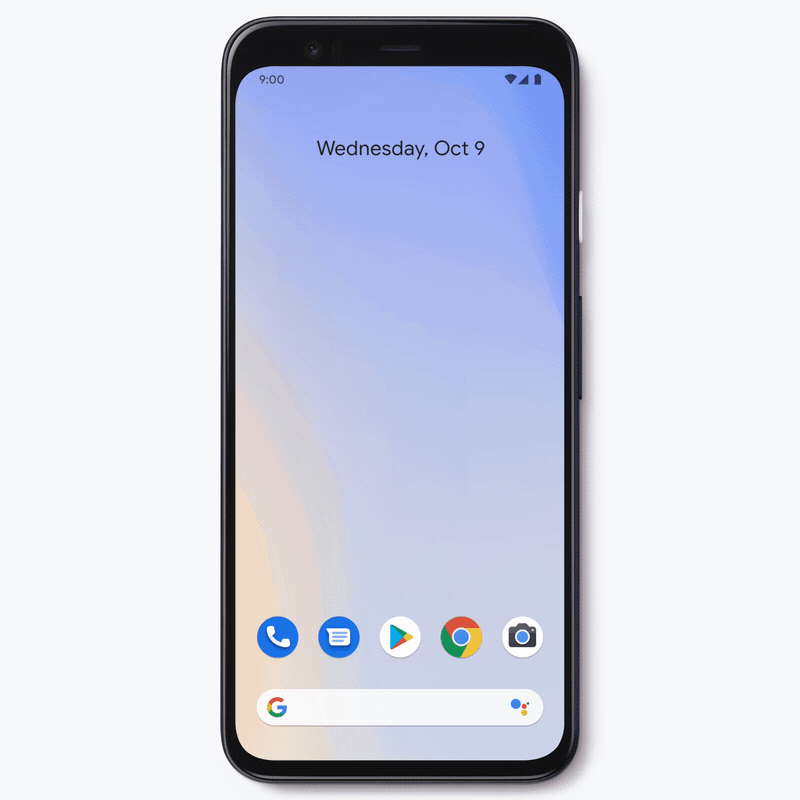
Getting on a flight is also getting easier. Simply take a screenshot of a boarding pass barcode and tap on the notification to add it to Google Pay. You will receive real-time flight updates, and on the day of your flight, you can just press the power button to pull up your boarding pass. This feature will be rolling out gradually in all countries with Google Pay during March on Pixel 3, 3a and 4.
Customize your Pixel’s look and feel
A number of system-level advancements will give Pixel users more control over the look and feel of their devices.
You may know that Dark theme looks great and helps save battery power. Starting today, Dark theme gets even more helpful and flexible in switching from light to dark background, with the ability to schedule Dark theme based on local sunrise and sunset times.
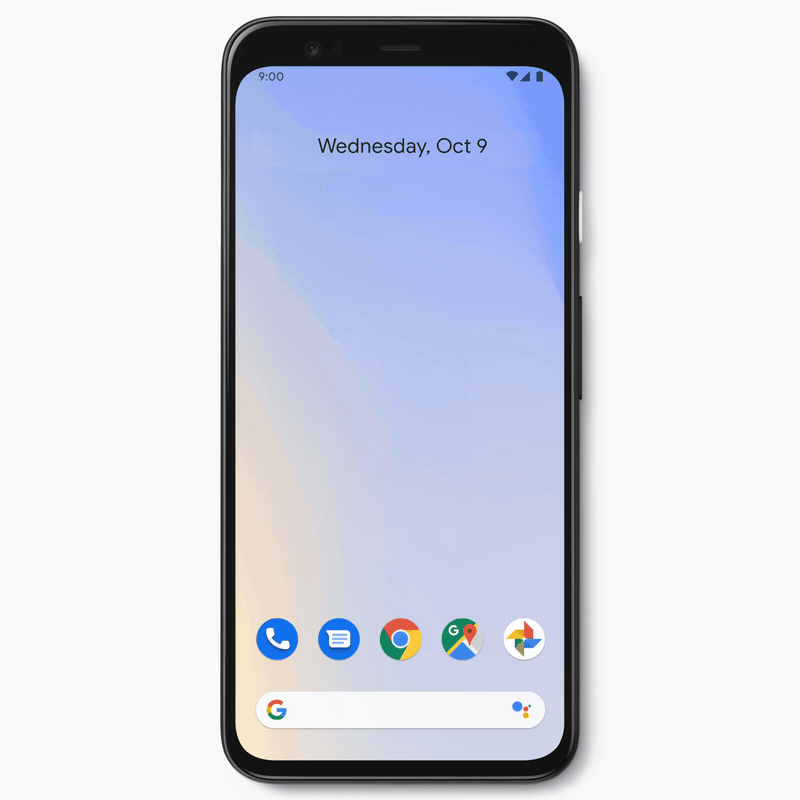
Have you forgotten to silence your phone when you get to work? Pixel gives you the ability to automatically enable certain rules based on WiFi network or physical location. You can now set up a rule to automatically silence your ringtone when you connect to your office WiFi, or go on Do Not Disturb when you walk in the front door of your house to focus on the people and things that matter most.
Pixel 4 users are also getting some unique updates to the way they engage with the content on their phone. Improved long press options in Pixel’s launcher will get more and faster help from your apps. There’s also an update to Adaptive brightness, which now temporarily increases screen brightness to make reading content easier when in extremely bright ambient lighting, like direct sunlight. Check out more options for customizing your screen options.
Here’s to better selfies, more emoji and a quick pause when you need it! Check out our support page for more information on the new features, and look out for more helpful features dropping for Pixel users soon.
1 Not available in all languages or countries. Car crash detection may not detect all accidents. High-impact activities may trigger calls to emergency services. This feature is dependent upon network connectivity and other factors and may not be reliable for emergency communications or available in all areas. For country and language availability and more information see g.co/pixel/carcrashdetection
Source: Android
New music controls, emoji and more features dropping for Pixel
A few months ago, Pixel owners got a few new, helpful features in our first feature drop. Beginning today, even more updates and new experiences will begin rolling out to Pixel users.
Help when you need it
You can already use Motion Sense to skip forward or go back to a previous song. Now, if you have a Pixel 4, you can also pause and resume music with a tapping gesture above the phone. So you can easily pause music when you're having a conversation, without even picking up your phone.

When you need help the most, your Pixel will be there too. Last October we launched the Personal Safety app on Pixel 4 for US users, which uses the phones’ sensors to quickly detect if you’ve been in a severe car crash1, and checks with you to see if you need emergency services. For those who need 911, you can request help via a voice command or with a single tap. Now, the feature is rolling out to Pixel users in Australia (000) and the UK (999). If you’re unresponsive, your Pixel will share relevant details, like location info, with emergency responders.

We’re also rolling out some helpful features to more Pixel devices. Now Live Caption, the technology that automatically captions media playing on your phone, will begin rolling out to Pixel 2 owners.
More fun with photos and video
New AR effects you can use live on your Duo video call with friends make chatting more visually stimulating. These effects change based on your facial expressions, and move with you around the screen. Duo calls now come with a whole new layer of fun.

Selfies on Pixel 4 are getting better, too. Your front-facing camera can now create images with depth, which improves Portrait Blur and color pop, and lets you create 3D photos for Facebook.
Emoji on Pixel will now be a more customizable and inclusive thanks to the emoji 12.1 update, with 169 new emoji to represent a wider variation of gender and skin tones, as well as more couple combinations to better reflect the world around us.

A more powerful power button
Pixel is making it faster to pick the right card when using Google Pay. Just press and hold the power button to swipe through your debit and credit cards, event tickets, boarding passes or access anything else in Google Pay. This feature will be available to users in the US, UK, Canada, Australia, France, Germany, Spain, Italy, Ireland, Taiwan and Singapore. If you have Pixel 4, you can also quickly access emergency contacts and medical information.

Getting on a flight is also getting easier. Simply take a screenshot of a boarding pass barcode and tap on the notification to add it to Google Pay. You will receive real-time flight updates, and on the day of your flight, you can just press the power button to pull up your boarding pass. This feature will be rolling out gradually in all countries with Google Pay during March on Pixel 3, 3a and 4.
Customize your Pixel’s look and feel
A number of system-level advancements will give Pixel users more control over the look and feel of their devices.
You may know that Dark theme looks great and helps save battery power. Starting today, Dark theme gets even more helpful and flexible in switching from light to dark background, with the ability to schedule Dark theme based on local sunrise and sunset times.

Have you forgotten to silence your phone when you get to work? Pixel gives you the ability to automatically enable certain rules based on WiFi network or physical location. You can now set up a rule to automatically silence your ringtone when you connect to your office WiFi, or go on Do Not Disturb when you walk in the front door of your house to focus on the people and things that matter most.
Pixel 4 users are also getting some unique updates to the way they engage with the content on their phone. Improved long press options in Pixel’s launcher will get more and faster help from your apps. There’s also an update to Adaptive brightness, which now temporarily increases screen brightness to make reading content easier when in extremely bright ambient lighting, like direct sunlight. Check out more options for customizing your screen options.
Here’s to better selfies, more emoji and a quick pause when you need it! Check out our support page for more information on the new features, and look out for more helpful features dropping for Pixel users soon.
1 Not available in all languages or countries. Car crash detection may not detect all accidents. High-impact activities may trigger calls to emergency services. This feature is dependent upon network connectivity and other factors and may not be reliable for emergency communications or available in all areas. For country and language availability and more information see g.co/pixel/carcrashdetection
Source: Android
FuzzBench: Fuzzer Benchmarking as a Service
Fuzzing is an important bug finding technique. At Google, we’ve found tens of thousands of bugs (1, 2) with fuzzers like libFuzzer and AFL. There are numerous research papers that either improve upon these tools (e.g. MOpt-AFL, AFLFast, etc) or introduce new techniques (e.g. Driller, QSYM, etc) for bug finding. However, it is hard to know how well these new tools and techniques generalize on a large set of real world programs. Though research normally includes evaluations, these often have shortcomings—they don't use a large and diverse set of real world benchmarks, use few trials, use short trials, or lack statistical tests to illustrate if findings are significant. This is understandable since full scale experiments can be prohibitively expensive for researchers. For example, a 24-hour, 10-trial, 10 fuzzer, 20 benchmark experiment would require 2,000 CPUs to complete in a day.
To help solve these issues the OSS-Fuzz team is launching FuzzBench, a fully automated, open source, free service. FuzzBench provides a framework for painlessly evaluating fuzzers in a reproducible way. To use FuzzBench, researchers can simply integrate a fuzzer and FuzzBench will run an experiment for 24 hours with many trials and real world benchmarks. Based on data from this experiment, FuzzBench will produce a report comparing the performance of the fuzzer to others and give insights into the strengths and weaknesses of each fuzzer. This should allow researchers to focus more of their time on perfecting techniques and less time setting up evaluations and dealing with existing fuzzers.
Integrating a fuzzer with FuzzBench is simple as most integrations are less than 50 lines of code (example). Once a fuzzer is integrated, it can fuzz almost all 250+ OSS-Fuzz projects out of the box. We have already integrated ten fuzzers, including AFL, LibFuzzer, Honggfuzz, and several academic projects such as QSYM and Eclipser.
Reports include statistical tests to give an idea how likely it is that performance differences between fuzzers are simply due to chance, as well as the raw data so researchers can do their own analysis. Performance is determined by the amount of covered program edges, though we plan on adding crashes as a performance metric. You can view a sample report here.
How to Participate
Our goal is to develop FuzzBench with community contributions and input so that it becomes the gold standard for fuzzer evaluation. We invite members of the fuzzing research community to contribute their fuzzers and techniques, even while they are in development. Better evaluations will lead to more adoption and greater impact for fuzzing research.We also encourage contributions of better ideas and techniques for evaluating fuzzers. Though we have made some progress on this problem, we have not solved it and we need the community’s help in developing these best practices.
Please join us by contributing to the FuzzBench repo on GitHub.
Source: Google Open Source Blog
FuzzBench: Fuzzer Benchmarking as a Service
We are excited to launch FuzzBench, a fully automated, open source, free service for evaluating fuzzers. The goal of FuzzBench is to make it painless to rigorously evaluate fuzzing research and make fuzzing research easier for the community to adopt.
Fuzzing is an important bug finding technique. At Google, we’ve found tens of thousands of bugs (1, 2) with fuzzers like libFuzzer and AFL. There are numerous research papers that either improve upon these tools (e.g. MOpt-AFL, AFLFast, etc) or introduce new techniques (e.g. Driller, QSYM, etc) for bug finding. However, it is hard to know how well these new tools and techniques generalize on a large set of real world programs. Though research normally includes evaluations, these often have shortcomings—they don't use a large and diverse set of real world benchmarks, use few trials, use short trials, or lack statistical tests to illustrate if findings are significant. This is understandable since full scale experiments can be prohibitively expensive for researchers. For example, a 24-hour, 10-trial, 10 fuzzer, 20 benchmark experiment would require 2,000 CPUs to complete in a day.
To help solve these issues the OSS-Fuzz team is launching FuzzBench, a fully automated, open source, free service. FuzzBench provides a framework for painlessly evaluating fuzzers in a reproducible way. To use FuzzBench, researchers can simply integrate a fuzzer and FuzzBench will run an experiment for 24 hours with many trials and real world benchmarks. Based on data from this experiment, FuzzBench will produce a report comparing the performance of the fuzzer to others and give insights into the strengths and weaknesses of each fuzzer. This should allow researchers to focus more of their time on perfecting techniques and less time setting up evaluations and dealing with existing fuzzers.
Integrating a fuzzer with FuzzBench is simple as most integrations are less than 50 lines of code (example). Once a fuzzer is integrated, it can fuzz almost all 250+ OSS-Fuzz projects out of the box. We have already integrated ten fuzzers, including AFL, LibFuzzer, Honggfuzz, and several academic projects such as QSYM and Eclipser.
Reports include statistical tests to give an idea how likely it is that performance differences between fuzzers are simply due to chance, as well as the raw data so researchers can do their own analysis. Performance is determined by the amount of covered program edges, though we plan on adding crashes as a performance metric. You can view a sample report here.
How to Participate
Our goal is to develop FuzzBench with community contributions and input so that it becomes the gold standard for fuzzer evaluation. We invite members of the fuzzing research community to contribute their fuzzers and techniques, even while they are in development. Better evaluations will lead to more adoption and greater impact for fuzzing research.
We also encourage contributions of better ideas and techniques for evaluating fuzzers. Though we have made some progress on this problem, we have not solved it and we need the community’s help in developing these best practices.
Please join us by contributing to the FuzzBench repo on GitHub.
Source: Google Online Security Blog
What’s new in Chrome OS: Ambient EQ and a new way to watch Netflix
We’re back with our latest highlight reel on new features on Chromebook. Say hello to Ambient EQ and another way to watch Netflix.
Ambient EQ: easy on your eyes
With Ambient EQ, Chromebook screens adapt to any context—whether you’re working outdoors on a sunny day, or if you’re watching a movie while snuggled under a blanket. Ambient EQ naturally adjusts the white balance and color temperature of your Chromebook’s screen based on your surroundings, which makes the content on screen appear more natural. The screen adjusts automatically, making it easier on your eyes.
With the latest update, the technology for Ambient EQ is ready and will be first available on the Samsung Galaxy Chromebook, which will be available for purchase in the US beginning in April. Look out for other Chromebooks in the future that will get Ambient EQ.
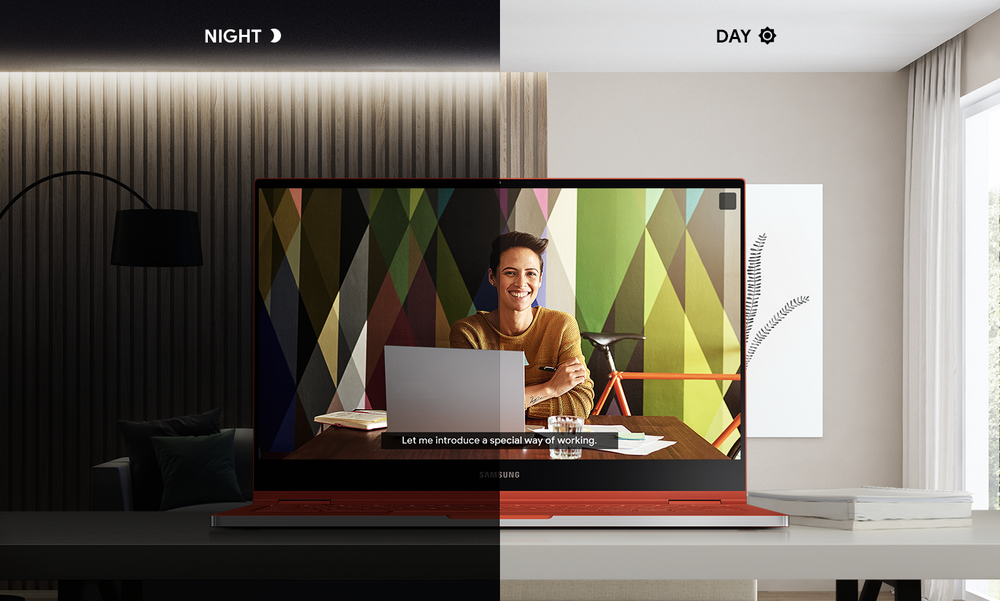
Watch Netflix “picture-in-picture”
Now, you can watch Netflix “picture-in-picture” with the app available from the Google Play Store. While you shop online or browse the web on Chromebook, you can multitask and enjoy your favorite Netflix show playing in the corner of your screen.
The next time you’re watching a show in the Netflix app, just switch to another window to activate “picture-in-picture”—no set-up required.

Your Netflix window stays in the foreground with "picture-in-picture"
We’ll be back soon with more new features for Chromebook.
Source: The Official Google Blog
Cable TV meets Android TV: a new way to watch
Has TV become too much of a good thing? We have more entertainment choices than ever, but juggling remotes and switching inputs has become a way of life. Start by catching up on your DVR, switch to an app on your streaming device, turn to your favorite game on your console—it’s tough to keep track of what’s where.
TV providers have been teaming up with Android TV to make things more simple. With the launch of AT&T TV nationwide in the U.S. today, there are now over 160 TV providers making new experiences that let you do all your watching—and more—in one place.
So grab your popcorn and check out the features your provider’s TV experience has to offer when it’s powered by Android TV.
One Place. One Remote. All your favorite ways to watch.
Sports, news, channels, apps—you name it. In addition to live TV, on-demand, and DVR, you can now download over 5,000 apps and games right on your provider’s TV box. No more HDMI switching or looking for a different remote. Just visit Google Play in your apps tab to download your favorites.
A faster way to the entertainment you love
Not sure what to watch? Ask the Google Assistant to "find action movies", and get quick recommendations from across live TV and your apps. You can even change the channel, pause live TV, or ask your DVR to record a show all with your voice. Press the Google Assistant button on your remote and ask “what can you do” to get started.
Do even more in your home with your voice
The Google Assistant isn’t just for controlling your TV. When that horror movie gets a bit too scary, you can turn on the lights and check your security cams from the safety of your sofa. Try creating a custom routine so you can say a simple command like “movie night” to switch on your favorite movie channel, adjust your blinds, and start the popcorn machine.
Put your small screen on your big screen
Chromecast is built into your TV box, so you can easily cast videos, photos, music and more from your phone to your TV. With your TV in the center of the home, it’s the perfect place to show photos from your recent trip or play music while you do chores.
Next time you lay down on your couch, remember these tips to watch, play, and do more, right on your Android TV powered set-top box.
Source: The Official Google Blog
Reaching a new generation of news viewers with VidSpark
Editor's note: Ahsante Bean is the head of Vidspark, a new Google News Initiative partnership with Poynter to help local publishers use video to reach a new younger audience for their journalism.
When I want to know what’s going on in the world, I often turn to social media. Like many people my age, I don’t own a television or subscribe to a newspaper, but I do watch a ton of online videos and do basically all of my reading from a screen. I’m eager to stay informed, but when I look for credible, accessible news content that’s relevant to my interests and viewing habits, my options are limited. If I’m looking for local news from my community, those options shrink further.
People in their teens and twenties are looking for content that’s important, but also engaging, fun, and relatable. We don’t need to seek out information; thanks to a variety of social feeds and specialized algorithms, it comes to us. But it doesn’t always come from trustworthy sources. Meanwhile, mainstream local news is struggling to meet young audiences where they are. If they rely only on their traditional methods of distribution, they risk becoming irrelevant to the next generation.
With the support of the Google News Initiative, Poynter is announcing VidSpark—a program helping local newsrooms reach younger viewers online with engaging, shareable social video.
Over the course of this year, Poynter will collaborate on a video series with three local newsrooms: WTSP, a TV station in Tampa Bay, Florida, the radio station atWGBH News in Boston, Massachusetts, and The Star Tribune, a newspaper in Minneapolis, Minnesota. Poynter will provide funding, coaching, and hands-on support in the areas of content development, audience engagement, and platform optimization.
As a YouTube creator myself, I know the importance of showing an authentic personality behind the content. With these series, we want to be transparent with the viewer, letting them into the process of journalism. We will showcase each newsroom’s unique talents, areas of expertise, and local character. We’ll have the freedom to play across platforms; we could create an IGTV series on climate change with a quirky host, or a YouTube show that talks about current events in a fun way. We’ll be responding to comments, listening to feedback, and learning along the way.
VidSpark is about helping newsrooms create fresh content that grows a sustainable audience well into the future. It’s a process of getting in front of younger viewers, acquainting them with local news organizations as trustworthy sources of information, and showing the investigative process. By doing this, we can show the next generation the importance of local news in maintaining informed citizens and safeguarding democracy.
VidSpark similarly seeks to shape the larger local news landscape. At the end of the year, Poynter will create a playbook of best practices to share our insights in hopes that our work helps the local newsroom in your community cover what you care about. If you want to see what we create and follow along as VidSpark develops this year, you can do that here.
The power of local news is in knowing what’s happening on the ground, in your community. It can preserve regional history and culture, and hold local authorities accountable. It can go deep on issues that affect your day-to-day life. Through online video, we hope to bring the strength of local news to the forefront for the next generation and make them feel a part of the story.
Source: The Official Google Blog
Celebrating Mardi Gras 2020
We are proud to be a part of these celebrations with support for the Mardi Gras Community Grants Program and our Grow with Google digital skills training for small businesses.
Community Grants
Through The Mardi Gras Community Grants Program we provided funding to individuals, community groups and not-for-profit groups to deliver their messages loudly and proudly during the Mardi Gras Parade. This is the third year we’ve supported the program.
Recipients include:
- Haka For Life - a non-profit created to provide a platform to communicate and raise awareness of mental health and suicide prevention through conversation, community, sharing, and the power of the Maori Haka.
- Jopuka Productions - a Central Coast youth arts company advocating for young artists who identify as LGBTQIA+.
- NSW Trans Youth Alliance - representing 200 young people who are mostly trans and aged 16 to 20.
- People with Disability Australia - representing people with disabilities through a strong ongoing connection with Mardi Gras.
- Aspect Conference Room - representing LGBTQIA+ people with Autism to increase disability awareness.
- Positive Life NSW - a state-wide peer-based organisation that speaks for and on behalf of all people living with HIV (PLHIV), partners, friends and family affected by HIV to promote the voice and diversity of PLHIV in NSW and break down stigma.
- Bentstix Hockey Club - Bentstix provides the LGBTQIA+ community an opportunity to learn and play hockey and promote acceptance of diverse sexuality and gender within the broader community.
- Runway Movement - a collective of LGBTIQ+ people of colour from all parts of Brisbane(Meanjin) aiming to close the gap from indigenous and first nation cultures and how we identify amongst these binaries of gender.
- The Institute of Many - a grassroots community group bringing together people living with HIV to provide peer support and advocacy and break down HIV stigma.
- Black Dog Institute - a mental health research institute dedicated to improving the mental health of all Australians, especially vulnerable and at-risk groups like the LGBTQI+ community.
- Out For Australia - providing visible role models and mentors to support aspiring LGBTIQ students and professionals.
- Central Coast Pride - volunteer run organisation that supports LGBTQIA+ communities on the Central Coast.
- Party Passport - representing the Northern Territory's LGBTQIA+ people.
- Selamat Datang Indonesian Community - representing the Indonesian LGBTI community and providing a networking environment for LGBTI Indonesians in Australia
- Trikone Australasia - providing social support and a safe, nurturing environment for LGBT+ people of South Asian origin.
- Trans Pride Australia - a social and support group for trans and gender diverse people and their loved ones in Australia, with a vision for all trans and gender diverse people to live their best possible life.
Digital Skills training for LGBTIQ+ businesses
We also hosted a Grow with Google for Mardi Gras 2020 skills training event at the Google office in Sydney in the lead up to Mardi Gras for LGBTQI+ individuals and allies who own or manage a SMB.
Partnering with the Sydney Gay and Lesbian Business Association, participants heard how to get started with digital marketing, including our free online skills training platform, and other digital tools to help their business be found online.
Putting Digital Skills training into action
It was during a visit to the Northern Territory to see the work of the Fred Hollows Foundation that James Hill witnessed the impact the doctor shortages have on remote communities. It inspired him to create a medical recruitment agency, Prescript, focused on addressing inequality in health care access. Prescript helps to tackle the problem by placing permanent and locum doctors in regional hospitals and practices all around the country.
James has used online tools to grow his business. Since attending a Mardi Gras Grow with Google event in 2019, he’s engaged a Google Partner, optimised his Google My Business profile and improved the performance of his Google Ads campaigns. In just 6 months, the campaigns have attracted 700+ new leads and most importantly, placed eligible doctors in regional and rural communities, getting help to people who need it most.
Business owner, James Hill at Lumiere Cafe.
We are proud to support Mardi Gras and help more individuals and communities get involved.




